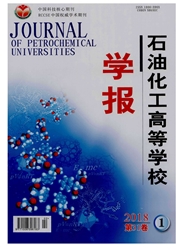

 中文摘要:
中文摘要:
通过对大港油田石油污染土壤进行异位强化生物修复.考察投加外源微生物是否能够加速生物修复进程以及土壤中石油污染物质降解的影响因素。收集的土壤分为两组后充分混合.干土中含油质量分数分别为8416.16385mg/kg。通过监测降解过程土壤中油含量的变化.分别考察自然菌群、营养刺激自然菌群、不同外源微生物、疏松剂(锯末)、不同初始油含量等因素对石油污染物降解的影响。色谱-质谱分析手段分析降解前后石油污染物质组分的变化。石油污染土壤经过300d的处理,在水含量一定的前提下,外源微生物对于石油污染物质加速降解具有显著作用。疏松剂和外源微生物协同作用下除油效果显著,除油率高达79%。降解前后的石油物质色谱质谱分析表明.相对分子质量小于C28的烷烃的微生物利用率高于相对分子质量大的烷烃,微生物可以有效降解多环芳烃。
 英文摘要:
英文摘要:
Experiment was undertaken for ex site-bioremediation of oil-contaminated soil which comes from Dagang oilfield, whether the exogenous microbes accelerate the rate of the bioremediation or not is studied and the impact factors on the biodegradation of the petroleum-contaminated soil were investigated too. The collected soil were divided into two groups then mixed, and the total petroleum hydrocarbon(TPH) was 8 416, 16 385 mg/kg respectively. The TPH of the soil was monitored during the treatment and the influence factors such as indigenous consortium, bio-stimulating, different exogenous microbe, bulk agent (sawdust), the varied initialTPH of the soil were investigated. The components changes of the bio- treated oil and the untreated oil were analyzed by GC- MS. The experiment was lasted for 300 d. When the water content of the soil is given, the exogenous microorganism can speed up the biodegradation of the petroleum greatly, and the reduction ratio of TPH reached to 79% with the combination of the exogenous microbe and bulk agent. The results of GC-MS show that the alkane can be better metabolized by microorganisms when their molecular weight are less than C28 and the microbes can biodegradate the polycyclic aromatic hydrocarbon efficiently.
 同期刊论文项目
同期刊论文项目
 同项目期刊论文
同项目期刊论文
 期刊信息
期刊信息
